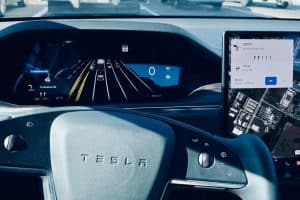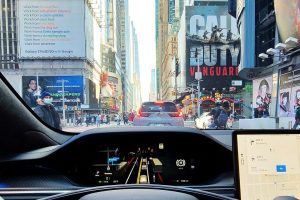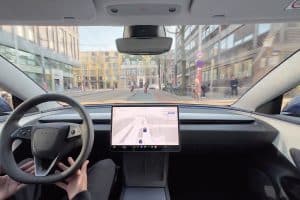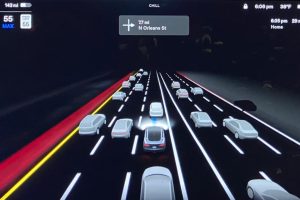- 🚗 Driverless ride-hailing in San Francisco experienced significant growth in the past year.
- 📈 Recent data reveals continued expansion despite an incident involving General Motors’ subsidiary Cruise.
- 🚦 Cruise and Alphabet-owned Waymo were the only companies approved for driverless ride-hailing tests in the city.
- 📊 San Francisco Chronicle’s quarterly data shows Waymo nearly reaching one million driverless miles between September and November.
- 🌐 Services grew rapidly, with only 26,000 driverless miles in the first quarter of 2023, highlighting the accelerated adoption throughout the year.
- 📉 Cruise lost its permit following an October accident, where a robotaxi hit and dragged a pedestrian.
- 🚖 Waymo and Cruise were approved for 24/7 robotaxi operations in August, but Cruise had to reduce its fleet due to safety concerns.
- 🌐 Waymo expanded its Phoenix robotaxi services to include highway driving and logged around 81,100 paid, driverless trips in November.
- 📱 While Tesla’s Full Self-Driving (FSD) beta accumulates impressive mileage, it operates differently, with no current driverless or ride-hailing features.
- 🛣️ Tesla’s FSD beta, reaching 500 million cumulative miles in October, is anticipated to evolve into driverless and ride-hailing capabilities in the future.
The streets of San Francisco witnessed a remarkable transformation in the past year, as driverless ride-hailing services experienced significant growth. Despite challenges, the industry is forging ahead with notable players contributing to the evolution of autonomous transportation.
The Landscape of Driverless Ride-Hailing
In the dynamic realm of autonomous vehicles, General Motors’ subsidiary Cruise and Alphabet-owned Waymo took the lead in gaining approval for driverless ride-hailing tests in San Francisco. The exclusive authorization marked a crucial step in shaping the city’s autonomous mobility landscape.
Data Insights: A Glimpse into the Numbers
Recent data, compiled from quarterly reports by the San Francisco Chronicle, sheds light on the magnitude of this transformation. Between September and November, Waymo approached the one-million-driverless-mile mark, underscoring the substantial progress made in a short span.
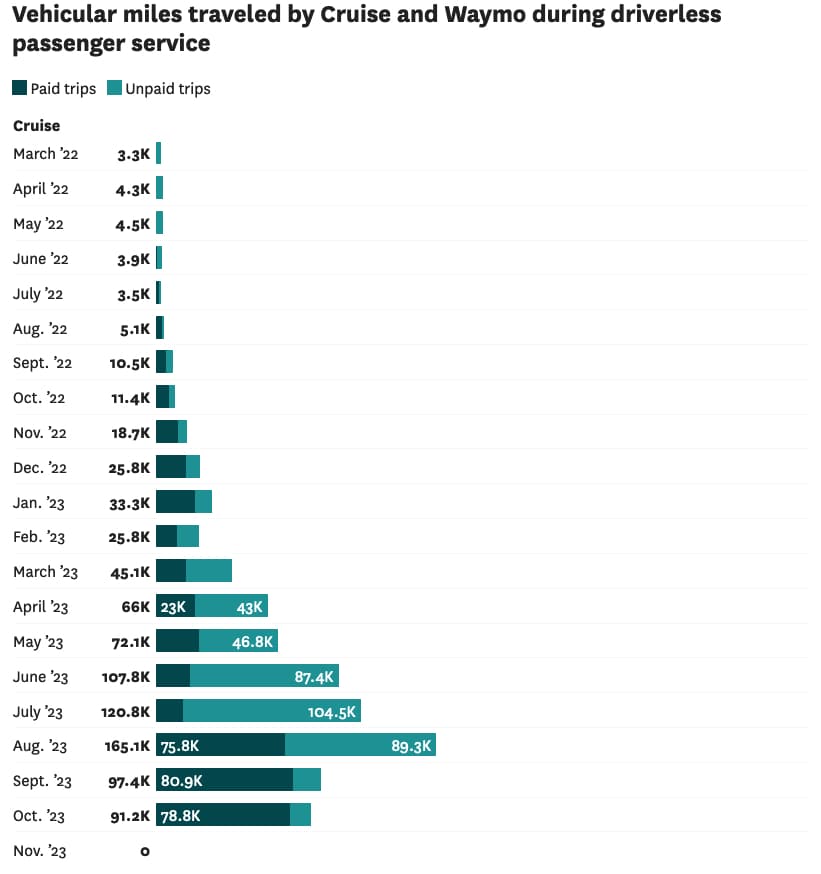
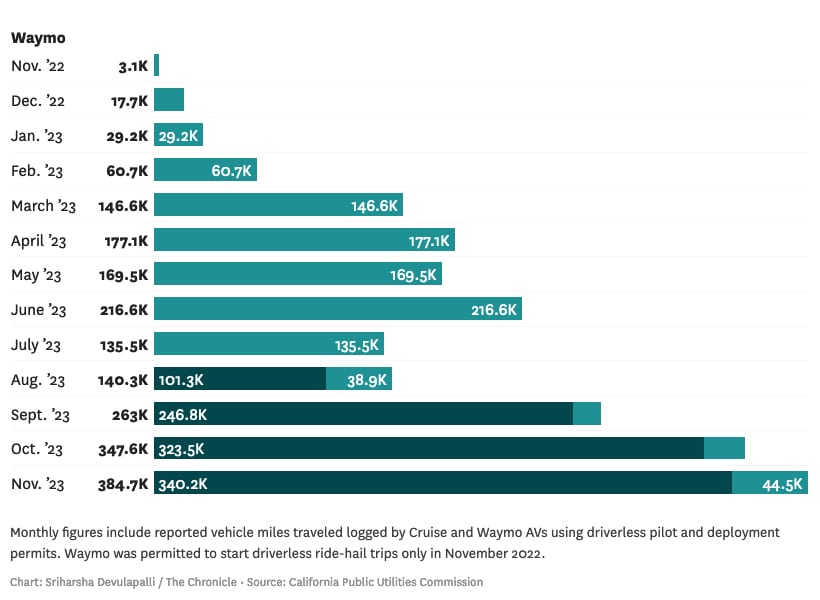
Rapid Growth Trajectory
The trajectory of driverless ride-hailing services in San Francisco is evident in the numbers. The first quarter of 2023 witnessed a modest 26,000 driverless miles combined between Waymo and Cruise. However, this figure sharply contrasts with the accelerated growth seen throughout the rest of the year, signifying an increasing acceptance of autonomous rides among the city’s residents.
Challenges Faced by Cruise
Despite the overall positive trend, Cruise faced a setback in October when a robotaxi was involved in an accident, resulting in the loss of its permit for operating driverless tests. The incident prompted safety concerns and led to a reduction in Cruise’s fleet by 50%, as mandated by the Department of Motor Vehicles.
Waymo’s Expansion and Success
In contrast, Waymo continued its expansion initiatives. The company not only extended its Phoenix robotaxi services to include highway driving but also logged an impressive 81,100 paid, driverless trips in November alone. Waymo’s steady growth showcases the resilience of driverless technology when implemented thoughtfully.
Tesla’s FSD Beta: A Different Approach
While the spotlight is on established players, Tesla’s Full Self-Driving (FSD) beta stands out as a unique contender. Accumulating an impressive 500 million cumulative miles by October, Tesla’s FSD beta operates differently. Unlike dedicated driverless ride-hailing services, Tesla’s approach involves activating the system in vehicles owned by customers.
Looking Ahead: The Future of Driverless Ride-Hailing
As the industry matures, the future seems promising. Despite challenges, the lessons learned from incidents contribute to refining safety measures. Waymo’s success in Phoenix and Tesla’s continuous strides in FSD beta hint at the potential for a widespread adoption of autonomous ride-hailing services.
In conclusion, San Francisco’s journey with driverless ride-hailing reflects both challenges and triumphs. The data-driven insights and contrasting strategies of key players underscore the dynamism of the autonomous transportation landscape.


